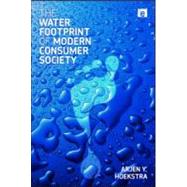The Water Footprint of Modern Consumer Society

The Water Footprint of Modern Consumer Society
- ISBN 13:
9781849713030
- ISBN 10:
1849713030
- Format: Hardcover
- Copyright: 05/22/2013
- Publisher: Earthscan / James & James
Rent
Sorry, this item is currently unavailable.
Note: Supplemental materials are not guaranteed with Rental or Used book purchases.
Extend or Purchase Your Rental at Any Time
Need to keep your rental past your due date? At any time before your due date you can extend or purchase your rental through your account.
Summary
People use lots of water for drinking, cooking and washing, but even more for producing things such as food, paper and cotton clothes. The water footprint is an indicator of water use that looks at both direct and indirect water use of a consumer or producer. The water footprint of an individual, community or business is defined as the total volume of freshwater that is used to produce the goods and services consumed by the individual or community or produced by the business. This book shows how consumption relates to water use and illustrates how the water footprint concept can be used to quantify this water use and ultimately be used as a tool to reduce water use. For example, it is calculated that it takes 16,000 litres of water to produce 1 kilogram of beef, or 140 litres of water to produce one cup of coffee. With a number of case studies it shows water use along supply chains and that consumption at one place is often linked to water use at another place. It illustrates that imports of water-intensive products can highly benefit water-scarce countries, but also that this creates a dependency on foreign water resources. The book also shows how water-scarce regions sometimes nevertheless use lots of water for making export products. The book raises the issue of sustainable consumption: how can consumers and businesses get involved in reducing the negative impact of the water footprints of final consumer goods?






